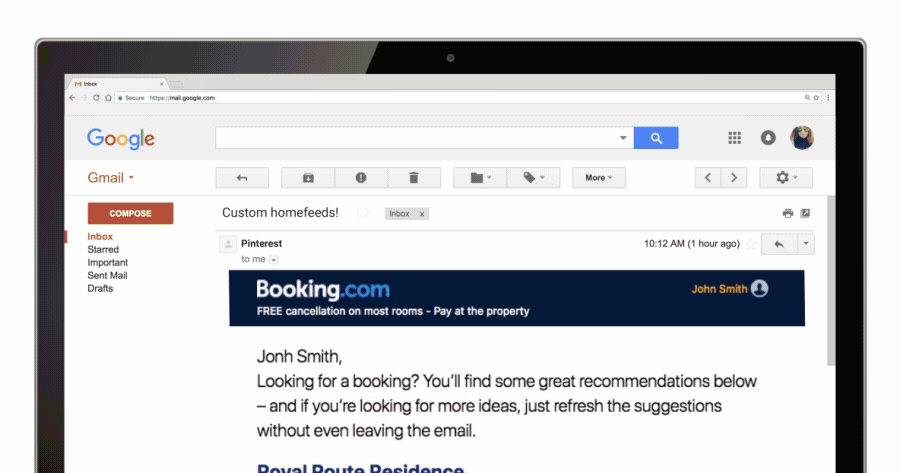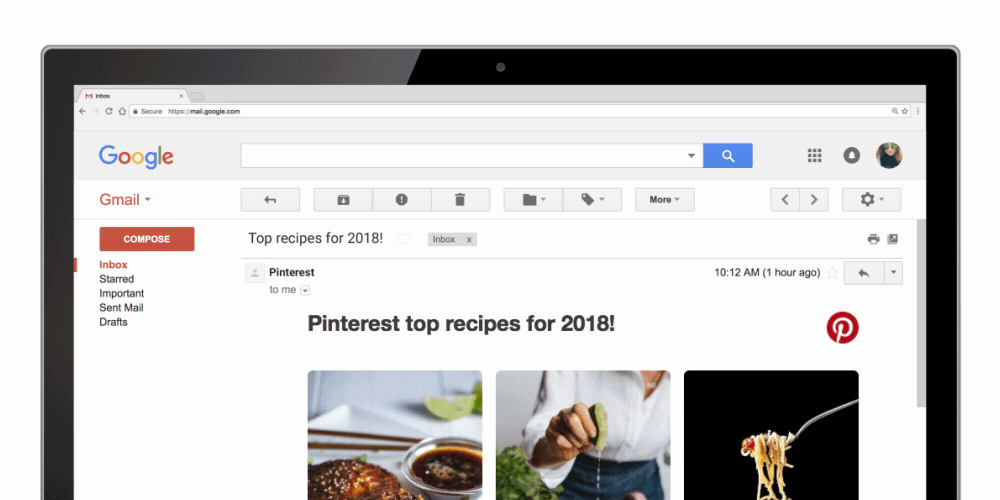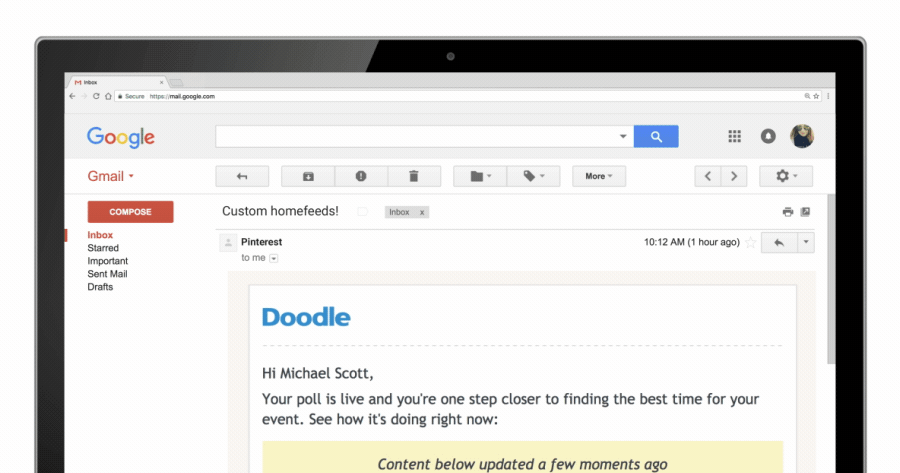Gmail today announced that it will be adding native support for dynamic and interactive email powered by AMP. We predicted that 2018 will be the year that interactive email goes mainstream, and Google’s news, shared at the AMP Conference 2018 in Amsterdam, might bring us one step closer to making interactive email available to the masses.
AMP started as an effort to help publishers, but as its capabilities have expanded over time, it’s now one of the best ways to build rich webpages. With this came the opportunity to modernize one of the most popular places where people spend their time: email.
Aakash Sahney
Product Manager, Gmail
You can watch a recording of the announcement here:
Brief refresher: What is AMP?
Launched by Google in 2015, the Accelerated Mobile Pages Project (AMP) is an open-source technology designed to improve the performance of web content, in particular on mobile devices. Gmail will become the first email client to support AMP—and therefore also support the implementation of dynamic and interactive elements in email.
What AMP support in Gmail means for email marketers
Gmail will require a separate MIME-type for the AMP version of the email: text-x-amphtml. Using MIME (Multipurpose Internet Mail Extensions) in email is nothing new. It’s been used in the email world to bundle together a plain-text version of your email along with the HTML version. For AMP-powered emails to work in Gmail, you’ll have to add a third MIME-type to your email.
Yes, you’ve heard right. Email marketers looking to leverage AMP to add interactivity to their emails will have to create a unique email entirely for Gmail. With 26% of all emails being opened in Gmail, it’s the #2 most popular email client worldwide. And the potential audience to receive interactive emails powered by AMP is large—the most recent stats confirmed by Google put Gmail users at 1 billion+ monthly active users.
But will an improved subscriber experience for this subset of consumers be worth the additional work for brands? This will heavily depend on each brands’ subscriber base, and whether or not AMP support will be picked up by other inbox providers going forward. Since AMP was launched by Google, it only makes sense for Google’s Gmail to be the first email client to add support. But in the long term, other inbox providers might follow:
Since it’s an open spec, we look forward to seeing other email clients adopt it, too.
Aakash Sahney
Product Manager, Gmail
Providing AMP support doesn’t only mean more work for email designers and developers but for ESPs (Email Service Providers) too. Most ESPs don’t offer out-of-the box support for a third MIME type and will have to make changes to their platforms in order for users to leverage AMP functionality.
It’s also still unclear whether AMP will be supported in all versions of Gmail. Gmail is known for inconsistent rendering, for example showing significant differences in email display between accounts powered by Gmail addresses and those that use non-gmail addresses via POP/IMAP. We might see mixed support for AMP across Gmail’s platform as well.
Examples of AMP-powered interactive emails
While the thought of more complex email development and troubleshooting might make you shudder, the power of AMP and how it can transform the email experience is truly exciting.
Gmail will be supporting the following AMP components (also check out their documentation):
Dynamic content
- amp-form
- amp-selector
- amp-bind & amp-state
- amp-list
- amp-mustache
Presentation
- amp-accordion
- amp-carousel
- amp-sidebar
- amp-image-lightbox
- amp-lightbox
- amp-fit-text
- amp-timeago
Media
- amp-img
- amp-anim
By leveraging these components, marketers can allow Gmail users to do things like RSVP to events, browse and interact with content, or fill out forms without ever leaving the email.
Curious to see examples in action? Gmail has shared some sample projects from early adopters—Pinterest, Booking.com, and Doodle—that are worth checking out:
- Booking.com showcases how to use AMP to create image carousels, let subscribers view and update current deals, and allow them to update their email preferences right in the email:

- AMP can support the ability to browse and save items straight from Pinterest’s email.

- Doodle moved activities that, before AMP, could only happen on a landing page and incorporated them directly into the email. Subscribers are able to respond to a survey and pick their availability right within Gmail.

What’s next?
You won’t see AMP-powered interactive emails in your Gmail inbox just yet. So far, it’s only available through Gmail’s developer preview. Email developers can sign up for the program and start building and testing their emails using AMP before support will be rolled out to Gmail inboxes later this year.
Learn more:
- Read “Bringing the power of AMP to Gmail” on the Google Blog
- Check out Google’s AMP for email specs
- Sign up for the Gmail Developer Preview of AMP for Email
- Watch the announcement of AMP support coming to Gmail
- Start experimenting with AMP for email in this AMP playground
What do you think about AMP for Email?
What’s your take on the opportunities, challenges and risks that AMP support will bring to the email industry? Share your thoughts and join the discussion on the Litmus Community.
The post Gmail Announces Native Support for Dynamic and Interactive Email Powered by AMP appeared first on Litmus Software, Inc..
